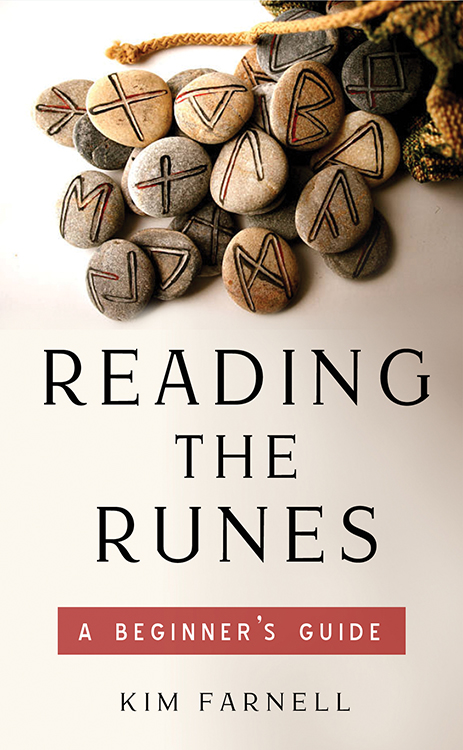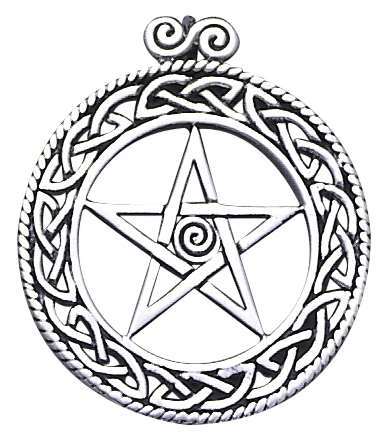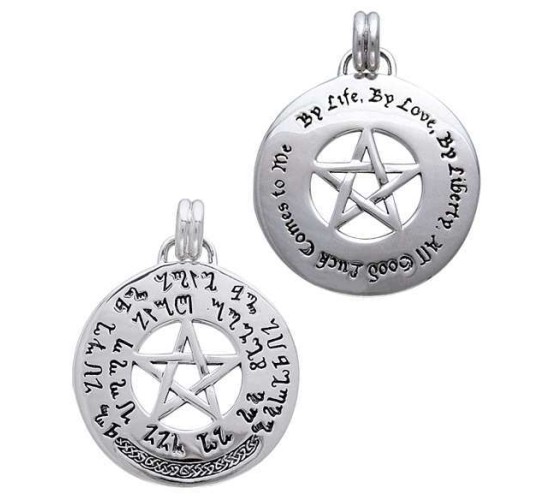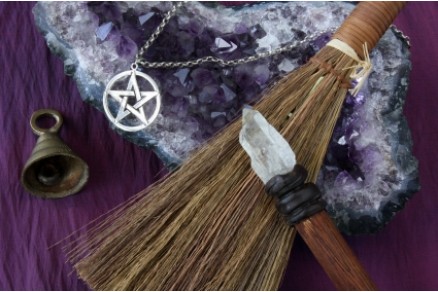The Power of Talismans in Wicca: Meaning, Uses, and Symbolism
- 1623
- 1
In the realm of spiritual practices and magical traditions, talismans have long held a place of significance. These enchanted objects are thought to be imbued with energy, offering protection, guidance, and specific powers to their holders. While talismans are common across many cultures and belief systems, they are especially important in the practice of Wicca. Wiccan practitioners often use talismans to channel energy, enhance spellwork, and connect with spiritual forces. This article explores what talismans are, their history, meaning, and their role in Wiccan practices. We’ll also discuss how to create and empower a talisman for personal use.
What Is a Talisman?
At its core, a talisman is an object believed to possess magical powers or energy. It is typically created for a specific purpose, such as protection, luck, or guidance. Unlike an amulet, which is generally used for passive protection, a talisman is often seen as an active tool in harnessing spiritual or magical energy. The purpose of a talisman can vary greatly depending on the practitioner’s intent, the symbols used, and the materials chosen.
The word "talisman" derives from the Greek word telesma, meaning "completion" or "consecration," and from the Arabic tilasm, meaning "magical object." Across history, talismans have been associated with different mystical traditions, including ancient Egypt, Kabbalah, and alchemy. In these traditions, talismans were thought to attract or embody divine forces, aligning the user with specific energies or deities.
Talisman Meaning in Wicca
In Wicca, talismans are believed to act as conduits of energy, connecting the wearer to the divine forces of nature, the elements, and the gods and goddesses. A talisman can be an object that has been enchanted through ritual or spellwork, and its power is linked to the intent with which it was created. Wiccans often use talismans as tools for transformation, protection, and spiritual growth.
The meaning of a talisman in Wicca is deeply tied to intention. Whether crafted for love, prosperity, healing, or defense against negativity, the power of a talisman lies in the focused intent of its creator. Through consecration and ritual, the talisman becomes a magical ally, helping its user to manifest their desires in alignment with natural and spiritual laws.
The Role of Talismans in Wiccan Practices
Talismans are versatile and can be used for a wide range of purposes within Wiccan practices. Some of the most common uses for talismans in Wicca include:
- Protection: Talismans are often created to ward off negative energy or harmful influences. These talismans may be worn as jewelry, placed in the home, or carried in a pocket.
- Attracting Love: A love talisman may be used to attract romantic energy, deepen existing relationships, or foster self-love. These talismans are often adorned with symbols like hearts, roses, or Venusian symbols, all of which resonate with love and beauty.
- Prosperity and Abundance: Talismans for wealth and success are crafted to attract financial gain, business success, or personal growth. Coins, pentacles, and symbols of fertility may be incorporated into these designs.
- Healing: Healing talismans may be used to support physical, emotional, or spiritual healing. They often incorporate crystals, herbs, or other symbols associated with health and wellness, such as the caduceus or ankh.
- Guidance and Wisdom: Some Wiccan practitioners create talismans to enhance intuition, psychic ability, or spiritual connection. These may feature symbols like the crescent moon, the all-seeing eye, or the owl, a creature associated with wisdom.
Crafting a Talisman in Wicca
A talisman can be any object, including items found in nature of purchased at a wiccan store. But, one of the most powerful aspects of using a talisman in Wicca is the ability to create one that is uniquely tailored to your needs and intentions. Here’s a step-by-step guide to crafting your own talisman:
- Define Your Intention
The first step in creating a talisman is to clearly define its purpose. What do you wish to achieve with this talisman? Whether it’s for protection, prosperity, or healing, having a clear intention is crucial, as the talisman will act as a physical manifestation of this goal. - Choose Materials and Symbols
Once your intention is set, the next step is to select materials that correspond to your goal. In Wicca, various materials are thought to carry different energy.
Crystals: Crystals are often incorporated into talismans for their metaphysical properties. For example, amethyst is used for protection and spiritual growth, while rose quartz is associated with love and compassion.
Herbs: Dried herbs may be placed inside a pouch or locket to enhance the talisman’s power. For instance, lavender is used for peace and protection, while basil is associated with prosperity.
Metals: The choice of metal can also enhance a talisman’s power. Silver is linked to the moon and intuition, while gold is connected to the sun and success.
Symbols: Incorporating sacred symbols is an important part of talisman-making. Popular Wiccan symbols include the pentacle, the triple moon, and runic designs - Consecration and Charging
After crafting the talisman, it must be consecrated and charged with energy. This is typically done through a ritual that involves calling on the elements, deities, or spirits for protection and blessing. The talisman may be placed on an altar, where it is purified using elements like water, salt, or incense. During the ritual, the practitioner focuses their energy on the talisman, imbuing it with their intention and charging it with magical power.
One popular method of charging a talisman in Wicca involves the use of moonlight. For example, placing a talisman under the light of a full moon is thought to infuse it with lunar energy, making it especially powerful for psychic work, protection, or fertility spells.
Famous Talismans in History
Throughout history, various cultures have recognized the power of talismans, often attributing their success and protection to these magical objects. Some famous talismans include:
- The Seal of Solomon: Said to be a symbol of King Solomon’s wisdom, this star-shaped talisman was believed to have the power to summon spirits and control demons. Its geometric design continues to be used in various magical practices today.
- The Ankh: In ancient Egypt, the ankh was a talisman representing life and immortality. It was often worn by pharaohs and priests as a symbol of protection and divine power.
- The Hand of Fatima (Hamsa): This palm-shaped symbol is used in Middle Eastern and North African cultures to ward off the evil eye. In Wiccan practices, it may be incorporated into protection talismans to prevent harm and negativity.
Talismans and Astrology
Astrology plays an important role in Wiccan talismanic magic. The alignment of the stars and planets can influence the creation and power of a talisman. Practitioners may choose to craft a talisman on a day ruled by a specific planet that aligns with their intention. For example:
- Sun (Sunday): Talismans created on Sunday are imbued with energy related to success, confidence, and vitality.
- Moon (Monday): The moon’s energy is ideal for creating talismans for intuition, emotions, and psychic work.
- Venus (Friday): Venus is associated with love, beauty, and relationships, making Friday a good day to create talismans for romance or friendship.
The phases of the moon also play a critical role in the creation of talismans. A talisman crafted during the waxing moon is ideal for attracting new opportunities, while a talisman made during the waning moon can be used to banish negativity or release old patterns.
Types of Talismans in Wicca
- Protection Talismans: These are crafted to shield the wearer from harm, whether physical, emotional, or spiritual. The pentacle, a five-pointed star, is a popular symbol used in protection talismans.
- Love Talismans: These are designed to attract or enhance romantic relationships. Incorporating symbols of Venus, rose quartz, and herbs like jasmine can amplify the talisman's power.
- Prosperity Talismans: These focus on financial success and abundance. Green stones such as jade or aventurine are commonly used, along with symbols of wealth like coins or pentacles.
- Healing Talismans: These are crafted to support physical, emotional, or spiritual healing. Crystals like amethyst or clear quartz are often used for their healing properties.
Talisman Meaning in Wicca and Symbolism
Symbols play a significant role in talisman creation. Each symbol holds its own unique energy and meaning, which can amplify the talisman's power. Common Wiccan symbols used in talismans include:
- The Pentacle: Represents the five elements (earth, air, fire, water, and spirit) and is a symbol of protection and balance.
- The Triple Moon: Symbolizes the phases of the moon and is associated with the Goddess, intuition, and the cycle of life.
- The Ankh: An ancient Egyptian symbol representing life and immortality, often used in healing or protection talismans.
- The Caduceus: Associated with Hermes, the messenger of the gods, this symbol is often used in talismans for communication, travel, and healing.
Talismans are powerful tools in Wicca because they act as tangible representations of the practitioner's intentions, drawing in or directing energy toward a specific goal.
Talisman vs. Amulet: What’s the Difference?
Though the terms talisman and amulet are often used interchangeably, there is a subtle difference between the two. While both are used for protection and empowerment, the amulet is traditionally seen as a passive object that protects the wearer from harm. Amulets are often inscribed with sacred symbols or made from materials thought to have protective qualities, such as silver or specific crystals.
A talisman, on the other hand, is usually created for a more active purpose. Rather than just offering protection, it is imbued with energy to manifest specific outcomes, such as attracting wealth, love, or spiritual insight. In Wiccan practice, talismans are often created during specific lunar phases or under the influence of certain planetary alignments, making them highly personalized and potent magical tools.
Ethical Considerations When Using Talismans
In Wicca, the ethical use of talismans is governed by the Wiccan Rede, which states, "An it harm none, do what ye will." This means that talismans should be created and used in ways that do not harm others. When creating a talisman, it’s important to ensure that your intention aligns with the values of kindness, respect, and harmony.
For example, creating a talisman to manipulate someone’s emotions or control their actions is considered unethical in WicIn Wicca, the use of talismans involves intentional magical practices designed to imbue objects with power. A talisman is an object charged with energy or intent to bring about specific outcomes, whether for protection, prosperity, love, or healing. Typically crafted from materials such as metals, crystals, and herbs, talismans carry both personal and symbolic meanings for the practitioner. They act as active tools in spellwork, believed to harness and direct spiritual forces aligned with the practitioner's intent.
The origin of the word "talisman" can be traced back to the Greek word telesma, meaning "completion" or "rite," and it refers to the consecration of an object. The talisman meaning in Wicca focuses on its ability to attract or amplify energy and influence events, making it a dynamic magical tool. In contrast to amulets, which are primarily passive objects of protection, talismans are considered active, specifically designed to bring about change by working with the forces of nature, divine entities, or planetary energies.
In Wicca, talismans are often linked to planetary movements, astrological signs, and the phases of the moon. For instance, talismans crafted during a waxing moon are intended for attracting or growing something in one's life, such as wealth or health, while talismans made under a waning moon are used for banishing, protection, or letting go of negative energies.
The Continuing Power of Talismans
In Wicca, talismans remain a powerful tool for spiritual growth, protection, and manifestation. Whether crafted for love, protection, or prosperity, these objects serve as a bridge between the practitioner’s intentions and the energies of the natural and spiritual worlds. By understanding the purpose, materials, and rituals involved in talisman creation, Wiccans can harness these objects' power to enhance their magical practice and align themselves with their deepest desires.
As ancient as the practice of magic itself, talismans continue to offer modern Wiccans a means to connect with the energies of the universe, guiding them toward personal empowerment, balance, and transformation. Whether drawn from ancient traditions or uniquely crafted for personal use, talismans are an enduring part of the magical journey in Wicca.
Related Posts
What is a Magic Amulet or Talisman? How do I use it?
- 2617
- 1
When you are considering something to empower (or enchant if you want to use a more magical sounding term), consider what you want it to do...and look at the design to see what it says to you. Then le..
How to Empower your Amulet or Talisman
- 2609
- 2
A few posts ago, I talked about how an amulet or talisman was just a hunk of metal - unless you empower it. This time, I'll expand a little more on it and tell you how to empower it for your intent.














